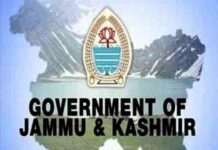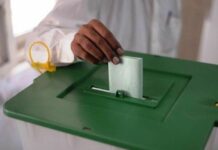SRINAGAR: Describing the recent power purchase agreement between Jammu and Kashmir and Rajasthan for a 40-year term as unjust, CPI(M) leader Mohamad Yousuf Tarigami stated that the deal is also detrimental to the development of J&K’s economy.
According to a statement, Tarigami mentioned that the agreement comes at a time when J&K is facing a severe electricity shortage, exacerbating the concerns of the people. “Instead of compensating the losses, our resources are handed over to other states.”
“The decision of J&K administration being highly unjustified and unjust is bound to make the people suffer more. As such, it needs to be withdrawn,” he said.
The letter from M Y Tarigami to Raj Kumar Singh reads:
“Dear Shri Raj Kumar Singh Ji,
The recent power purchase agreement between Ratle Hydro Electric Power Corporation Ltd and J&K Power Development Corporation with Rajasthan Urja Vikas and IT Services Ltd for off-take of power for 40 years is not only the Government of India’s unjust decision but also against the development of J&K economy.
Jammu and Kashmir is endowed with rich resources, minerals, and hydropower. Among the minerals, Bauxite, Gypsum, Sapphire, and recently discovered Lithium, while the water resources for hydropower generation through big HEPs and small waterfalls mini hydro projects.
The estimates are 24 thousand MWs of power potential in the region. Local Govt HEPs, Central Govt HEPs NHPC 23 projects with 1. Salal Reasi 690 MW Installed capacity 1372.4MWs 2. Uri Civil I & II 720 MWs 3. Dulhasti I & II 448 MWs 4. Sewa II 120 MWs 5. Nam Bazgo 45 MWs 6. Chutuk 44 MWs 7. Kishenganga 330 MWs NHPC is generating power 2397 MWs with 10 per cent of total power generated being the share of J&K. According to the Government hydropower generation will double by 2026 and triple by 2030. Some HEPs in progress are HEP Ratle 850 MWs, Kewar 540 MWs, and Kirithi 390 MWs. The other hydropower projects for which work is in progress are Pukuldul 1000 MWs, and Kiru 624 MWs and are under NHPC. Besides 1856 MW Swalakot HE and 380 MW Dulhasti Stage-2.
There is no shortage of power supply in J&K, and its big HEP is Bagliar HEP with an installed capacity of 900 MW and the rest of the 22 projects are small ones. The shortage of power in J&K is due to the following reasons: a. IWT remains a bottleneck and does not allow J&K to harness the potential of water resources to optimum because it has to use only run-of-the-river water resources. Therefore, the constraint is on storage capacity. It cannot go beyond 13 lac acres of irrigation capacity building, that is, the ceiling. IWT constraints are only on J&K because the three rivers flow through J&K and the other three rivers flow through Punjab, Ravi, Satluj, and Bias. Pakistan is compensated by three flowing through J&K Jhelum, Sindh, and Chenab while the other three rivers, Ravi, Sutlej, and Bias flowing through Punjab and India take full benefit as per treaty provisions. The constraints are not in the case of other states if they use water resources from their rivers. b. The water resources being used by the Government of India Corporations, NHPC, for hydropower generation in any State is permissible subject to a norm that the State concerned is entitled to 10 per cent free power from the producing Corporation/agency (NHPC). But this norm is not ipso facto applicable to J&K because those States are not subject to IWT bottlenecks. Therefore, J&K is entitled to separate treatment/special dispensation, that is at least 40 per cent free power rather than the present 10 per cent by the producing agency. Continued on Page 2 c. The Central Government must compensate Jammu and Kashmir, on a perennial basis, 400 MWs of power out of the central pool to compensate for the opportunity cost (loss of overall development due to IWT constraint since 1960). d. The Government of India did not give a “counter-guarantee” required by the hydropower giants/domestic Corporations/Overseas Corporations to generate hydropower from Chinab, Jhelum, and Sindh rivers for the reason to enable and facilitate the monopoly power of NHPS over the river basins in J&K.
Dr Farooq Abdullah and Mufti Mohammad Sayed fought for the counter-guarantee/sovereign guarantee during their respective periods. Historical documents reveal that in 1912 the Monarchs of West Punjab requested Maharaja Pratap Singh to permit them to construct Wular Barrage to have additional irrigation for rabi crops and they would pay a royalty of Rs 75000 per month to Maharaja J&K, but the Monarch of J&K turned down the request. They later came in 1924 with the same request and offered 1,85000 as royalty but Maharaja J&K again rejected the offer.
If J&K is compensated as per its entitlement, it cannot have shortages of power in the lean period.
The above facts were made clear to the Prime Minister in 2004 by senior academia of the University of Kashmir and also the Government of India by the then State Governments from time to time, and eventually, the Prime Minister constituted a Task Force headed by the former Governor RBI, and the said Task Force recommended as under:
While examining the plea, “The Task Force recommends that the Government of India transfer Dulhisti HEP to Jammu and Kashmir by compensating NHPC as above. This will not only augment the power supply position of Jammu and Kashmir but also make power accessible to the State at a low levelized tariff of 0.65/Kwhr”.
The Task Force recommends further that, “keeping these considerations in view, the Task Force recommends that 1020MW Burser Storage Scheme be transferred back from NHPC to Jammu and Kashmir for execution in the State Sector”.
The Jammu and Kashmir administration has entered into an agreement for off-take of power out of Ratle HEP for a period of 40 years at a time when it has available power distribution supply for 6-8 hours in the winter lean period when the available supply for summer months is for 12-14 hours. According to official estimates during 2019-20, the peak demand for power stood at 3140 MWs as against the availability of 2574 MWs, leaving the deficit at 566 MWs. During 2022-23, the peak demand for power stood at 3600 MWs as against the availability of 3100 MWs, leaving the deficit at 500 MWs.
Since the winter precipitation and snowfall have been unprecedentedly low, power generation has further decreased, leaving no scope for entering into off-take agreements with other states. The economy suffers due to power scarcity around the year, MSME sector gets a few working days
due to a shortage of power, the household domestic handicraft industry suffers, and therefore, Jammu and Kashmir cannot afford to sell power out of its HEPs to the outside.
The decision of the J&K administration is highly unjustified and unjust is bound to make the people suffer more. As such, it needs to be withdrawn.”















